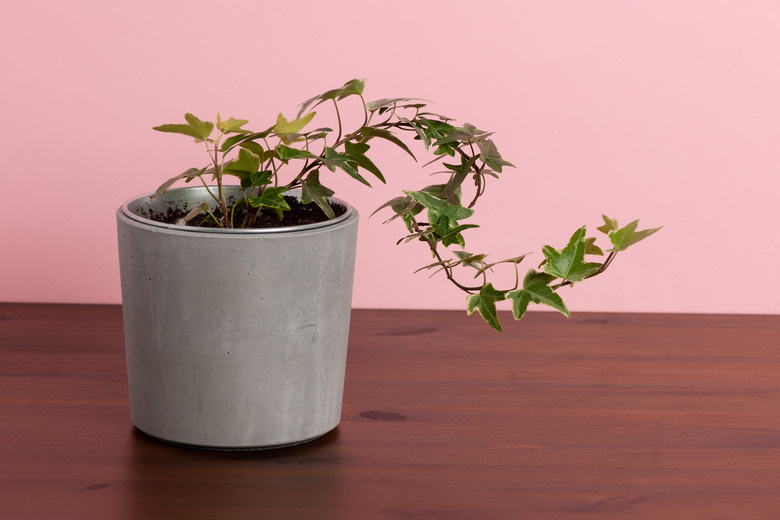My Ivy Is Losing Leaves
We may receive a commission on purchases made from links.
When an ivy plant does well, it's a vigorous grower; in fact, some species are so prolific that they're invasive in many areas. These plants with their lobed leaves are well-loved by houseplant aficionados. Typically, ivy can be easy to grow, but it's not uncommon for its leaves to yellow or even for ivy to lose leaves. Watering too much or too little can be the key to what's throwing your ivy off.
Why Are Ivy Leaves Dropping?
Why Are Ivy Leaves Dropping?
Did you recently bring your ivy home from a shop? Simply changing to a new environment can cause your plant to shake things up. If they're not getting the same amount of light, large leaves can begin to die and drop off. Always pay attention to your ivy, or any plant, after moving it, because you'll quickly see via new growth or problem areas whether your plant is enjoying its new spot.
A frequent reason for leaves to drop off ivy plants is that the plant gets too dried out. This can be caused by heatwaves, household heat being too high or simply neglecting its water supply. Sometimes, ivy is sold potted in peat moss. If this dries out completely, it can be hard to saturate the peat to a healthy point, and the plant suffers increasingly as a result. Simply repotting it and removing most of the peat can resolve the always-dry problem while encouraging fresh leaf growth.
Spider mites, unfortunately, are another frequent cause for ivy plants to excessively shed leaves. Mites love dry conditions, and they'll infest the plant if it's neglected of water. They attack under the leaves by the stems, depriving the plant of chlorophyll and drastically affecting its health, often fatally.
How to Keep Ivy Healthy
How to Keep Ivy Healthy
If you're having problems with ivy, the two biggest factors are likely your watering habits and the light it's getting. Look for a medium-bright or bright area that isn't in direct sunlight. The surface of the soil should be beginning to dry out between waterings.
As much as it doesn't want to dry out completely, it also won't like being waterlogged. Well-draining soil is important, the roots shouldn't stand in water for long, as this can cause root rot. Once the roots begin rotting, the end is likely nigh for your plant.
Dry soil is a problem, but so is dry air. Winter heating can excessively dry out your home's atmosphere, which encourages mites, making misting an important part of ivy care. Give it a good misting two or three times weekly, or let it live by a plant humidifier. Misting and humidity also keep spider mites at bay. If you've noticed tiny mites or their nefarious tell-tale webbing, start blasting the plant with a good stream of water, as mites hate it, or even take the plant into the shower for a few minutes.
Some Dropped Leaves Are Normal
Some Dropped Leaves Are Normal
Leaves will always eventually die and drop, and new leaves will come in their place. It's the plant circle of life. Don't be too alarmed, especially as seasons change, if a few larger, older leaves start to yellow or turn brown and drop. Once they begin yellowing or browning, you can always just pinch them off at the base of their stems to help redirect energy to new growth.
And don't forget to rotate your houseplants, especially ivy, as they should be turned regularly, at least monthly, so new growth is robust on all sides.
